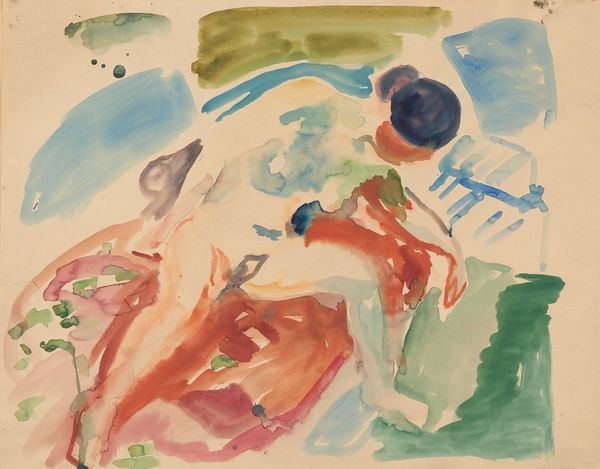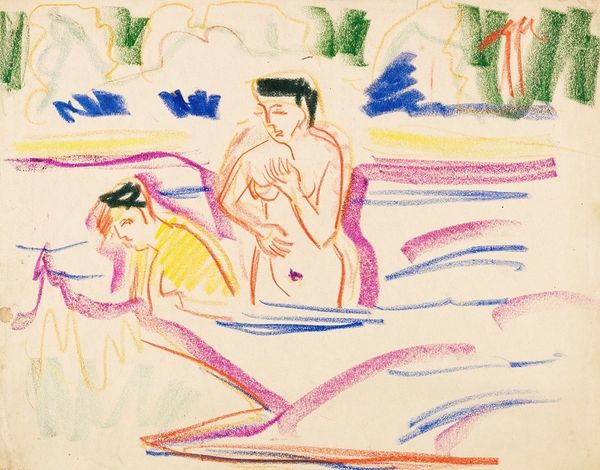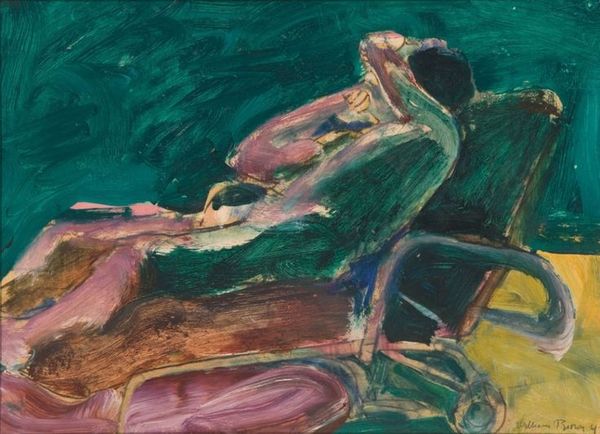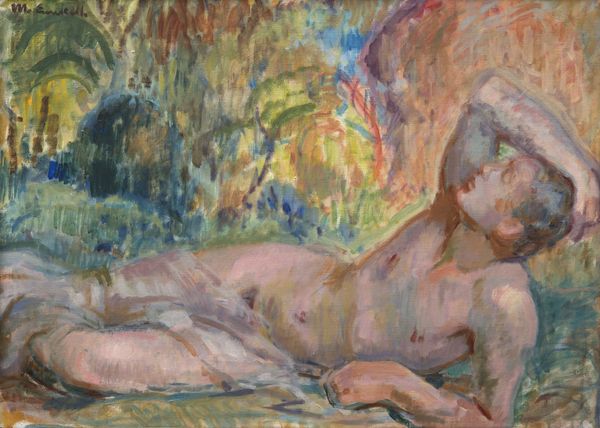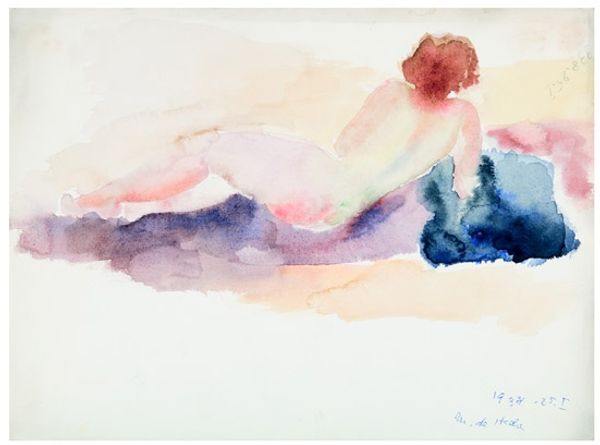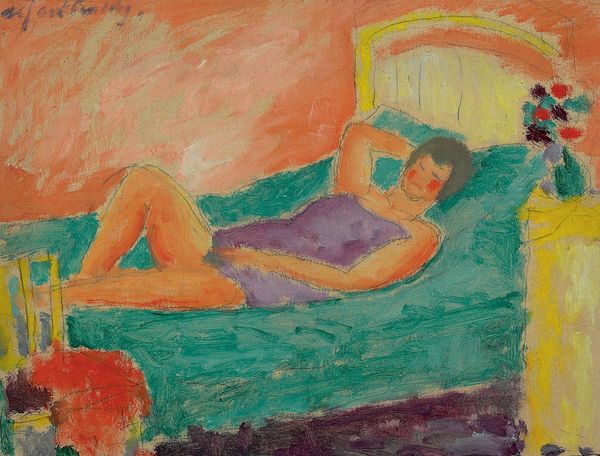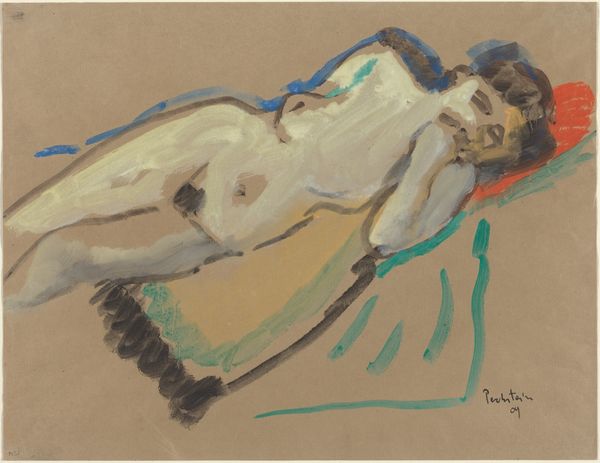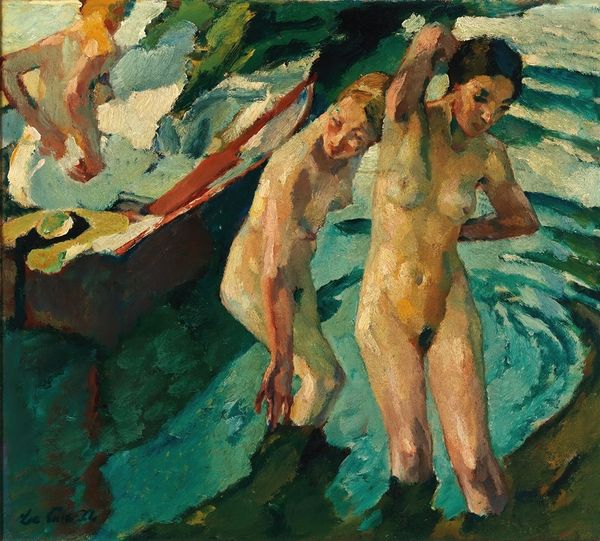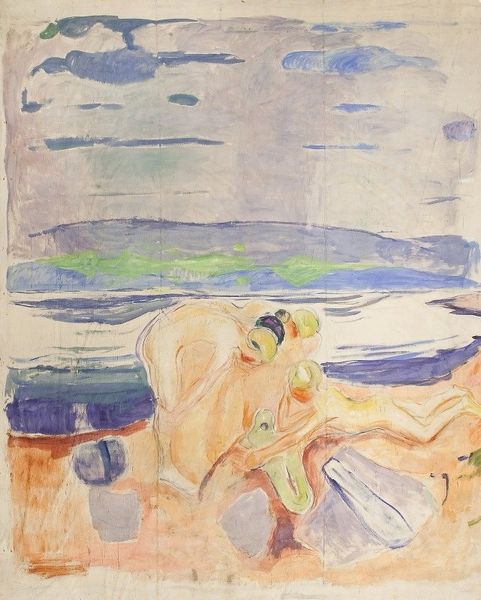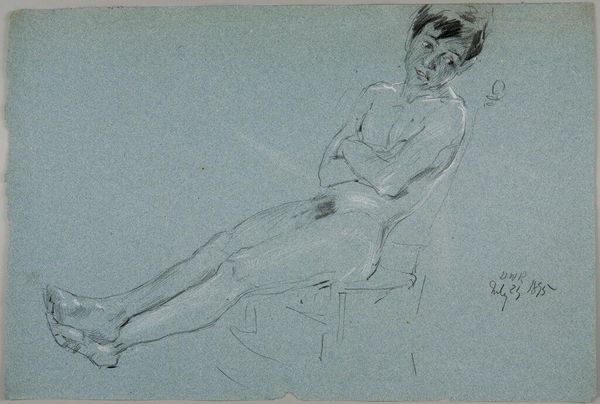
Copyright: Modern Artists: Artvee
Editor: So, this is Matisse’s "Seated Nude," painted in 1906, oil on canvas. It strikes me as very... intimate, yet detached. The brushstrokes are so loose. What do you see in this piece, particularly concerning its place within art history? Curator: It's compelling how you’ve immediately keyed into this tension between intimacy and detachment. Let's consider the societal gaze at the time. In 1906, displaying the nude body was still heavily mediated by historical and patriarchal expectations. But Matisse, as a key figure in Fauvism, throws convention to the wind with those daring colors and brushstrokes. It really interrogates what the body represents, shifting the focus from pure objectification to something… else. What's *she* thinking, rather than just what *we* see? Does the composition reinforce that in any way, for you? Editor: Definitely. The way she's positioned, almost self-contained within the vibrant background, gives her agency. It challenges that passive "object" reading. Curator: Precisely. And it's important to acknowledge how gender and race play a role. How might Matisse’s construction of the "nude" be speaking to or perhaps even subverting, established European artistic traditions that often exoticized or marginalized non-European bodies? This, of course, prompts critical discussion about representation, power, and the role of the artist. Editor: I see what you mean! This painting is doing so much more than just representing a nude figure; it’s starting a conversation about identity and representation. I will never look at another nude painting the same way again. Curator: That's the power of situating art within its historical context while using contemporary theoretical frameworks. Art becomes a vibrant site for ongoing dialogue and discovery.
Comments
No comments
Be the first to comment and join the conversation on the ultimate creative platform.
